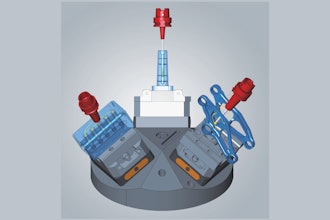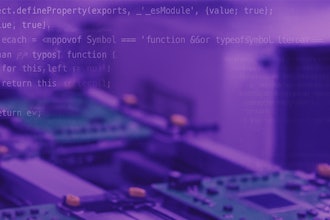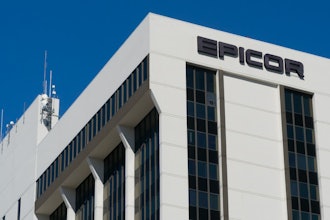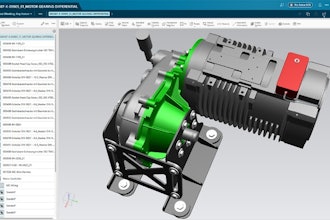
 Jack Payne, VP, Product Management & Solutions Consulting, Aptean
Jack Payne, VP, Product Management & Solutions Consulting, ApteanHouse hunting can be exhausting. You made a list of “must-haves,” walked through dozens of houses and finally closed on the one that best fit your criteria. Now you’re ready to move in, but there are a few things that still need to be addressed. There isn’t quite as much storage as you wanted. The carpets need to be replaced because you prefer a cut pile to Berber. But what to do with the kitchen? It isn’t the layout that you wanted, but almost everything else in the house was checked off your list.
In a similar fashion, your company has gone through the selection process for an ERP solution. The reality is that you will not achieve a 100 percent match to your business requirement — 90-95 percent is considered ideal. So how do you resolve the differences? Do you adapt to your new system or do you change it? If you do make changes, how much of the code do you alter?
There are some factors to be considered before any changes are made. One of the first steps to prioritize that 5-10 percent gap. Maybe one of those gaps impacts a workflow in your manufacturing process. Another might impact the way a department prefers to operate. There should be clearly defined criteria for potential customizations, including a cost-benefit analysis to ensure the company is customizing where it results in a unique competitive advantage.
Just as you budget and prioritize renovations to a new house, implementing an ERP calls for careful governance and change management. Some areas of the new house or the new ERP will be updated, and others will involve adjusting your habits.
Adapting
Perhaps the house you purchased was in a certain area because of the desirable school system. Although it has the two-car garage you wanted, it doesn’t have the basement storage. There are several ways to work around the need for storage. One side of garage may be allocated for parking and the other for storage. You could rent a storage unit for holiday decorations and off-season clothes. You may decide that you really don’t need to keep as much as you have been, like that collection of old VHS movies.
Consider if it’s possible to modify business workflows to fit the system parameters. Research by Panorama Consulting states that 64 percent of business implement an ERP solution in order to improve business performance. Carefully examine the existing processes and determine if there is a comparable, or better, way of working within the system. The processes and procedures embedded in many systems are often based on industry best practices, which may be more efficient or more effective than your current workflows.
Configuring
Every homeowner knows they will need to do some work to personalize their new space. You probably overlooked the plain beige walls, knowing that you would paint them with your preferred colors. The outdated shag carpet would give way to hardwood, and the white appliances would be replaced with stainless steel.
In a similar fashion, an ERP system can be configured to suit the needs of the organization. Most vendors provide fairly robust configuration and personalization tools that will allow your company to tailor the software to suit your needs without altering the source code. Take advantage of configuration within the solution as there may be options that will narrow that gap in your requirements. It is essential to consider the future state of the business as well. Configuring the system, rather than customizing, will allow for a smoother upgrade path. Examine the product roadmap carefully; some of the gaps may be filled by an upcoming release.
Another option is to add additional business logic. Perhaps your company has a very specific way to collecting and reporting information. Maybe the ERP matched a number of your requirements, with the exception of a very specific need such as consignment inventory. Extending inquiry reporting or adding logic to the system would provide the capabilities by adding to rather than altering the base code.
Customizing
Back to the kitchen. Maybe the U-shaped layout just will not work for you; you absolutely have to have an open floor plan with an island so you can socialize while cooking. During the buying process, you had already envisioned taking out a wall to expand the space. It will take additional time and expense, but remodeling will give you the exact kitchen layout you desire.
Customizing the source code will ensure the ERP meets your precise specifications. According to Panorama Consulting, only 11 percent of organizations implemented an ERP with no customizations; 33 percent of ERP systems incorporated some customization, modifying 11-25 percent of the code, and 37 percent of companies modified 26-50 percent. There are times when it is appropriate to customize your ERP system, but there are also cautions to consider.
Like home renovations, customizations are prone to “scope creep.” What began as a minor change can potentially become a major undertaking as developers begin to sort through the requirements. Changing the way the system handles pricing or costing will have an impact on reporting, meaning that section will need to be altered as well.
Looking Ahead
Customizing the base code may be the fastest way to address gaps in your list of requirements, but it may not be the best course of action for the long term. Research indicates 57 percent of companies implement an ERP to position themselves for growth, and 49 percent want to make employees jobs easier. Growth opportunities often necessitate operational changes; customizations designed for old tactics may not be able to adapt to those new strategies. Upgrades will also be more difficult and more expensive. Because the code often needs to be rewritten to support newer versions, companies with significant customizations often defer upgrades — sometimes indefinitely.
Just like every homebuyer is different, with different priorities, every company will find its own spot on the spectrum of customization. The right answer most depends on how unique your business is, how established its processes are and how open to change your organization is. While no solution offers a perfect fit, the right ERP will meet the majority of the business needs and provide configurations to fill some of the gaps, leaving a smaller percentage to be resolved with customization.
Jack Payne is VP, Product Management & Solutions Consulting for Aptean























